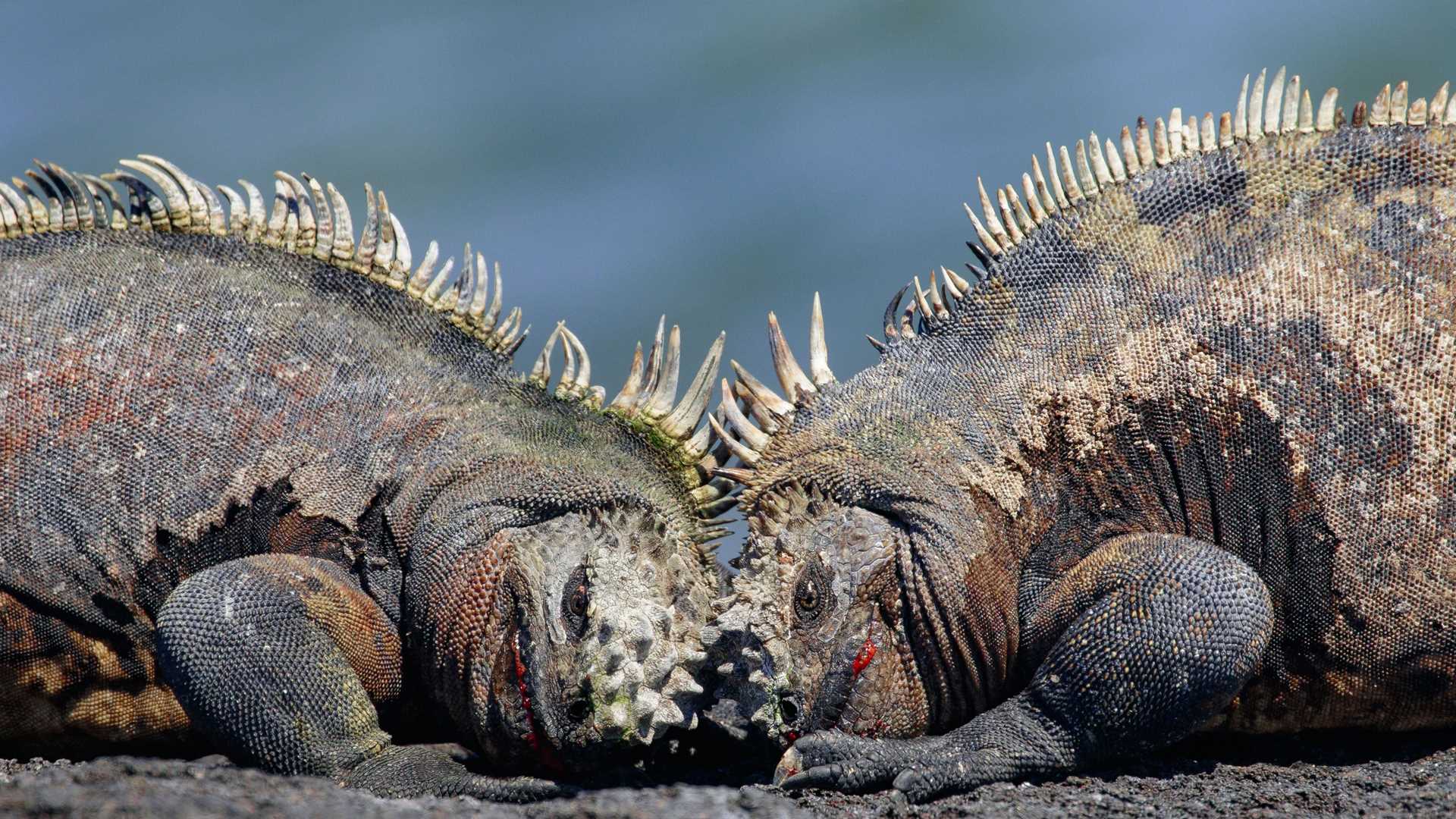Early in the morning we had a dry landing onto the youngest of the Galapagos islands known as Fernandina. Punta Espinoza is the only visitor site on this island. It is a stunning place covered with black lava flows and large colonies of Galapagos marine iguanas. During our walk we spotted young Galapagos hawks practicing their hunting strategies and being curious about our presence in this still pristine area. Visiting Fernandina is like travelling back in time to how Galapagos used to be, before introduced species appeared.
From a distance we could see one of the most active volcanoes in the world, “La Cumbre,” the mother shield volcano that created the whole island of Fernandina. Primary succession could be seen where pioneer species such lichens and lava cacti are just getting established for the first time on this new terrain. Along the trail we were lucky to spot a western Galapagos racer snake, a couple of Galapagos flightless cormorants, and male marine iguanas engaged in territorial disputes.
Afterward, during our snorkeling activity, we swam a couple of Galapagos penguins and we spotted Pacific green sea turtles and marine iguanas feeding on algae. In the afternoon, we embarked on a Zodiac ride along the coast of Isabela Island, exploring Punta Vicente Roca. We saw plenty of Pacific green sea turtles in the shallow waters, fur seals lying on the rocky shores, and even a couple of Galapagos penguins resting on rocks. These Galapagos penguins are the northern most penguin species in the world and their population is small, so to spot them was a delightful opportunity.
After the Zodiac ride, we celebrated the crossing of the equator line with a glass of champagne on the upper deck of the National Geographic Endeavour II while enjoying a beautiful sunset.







